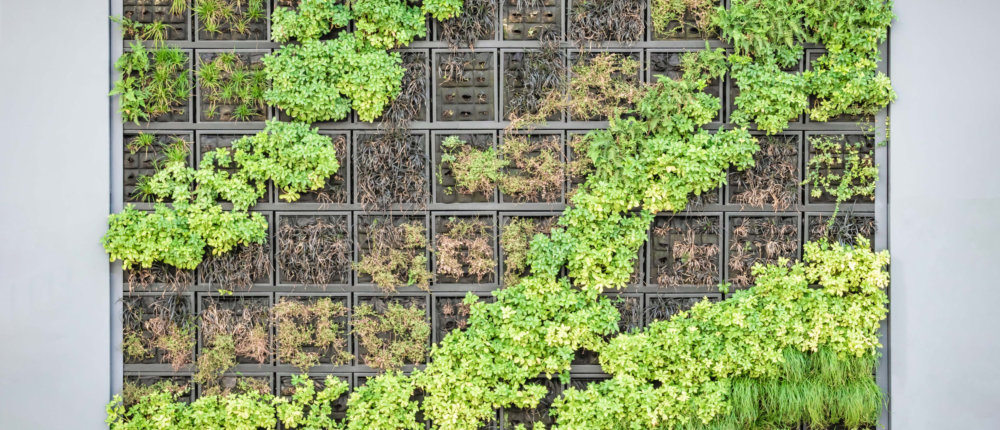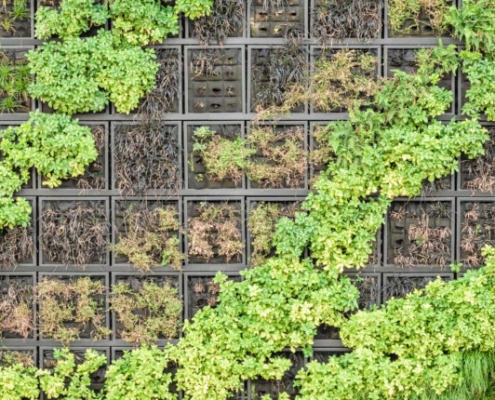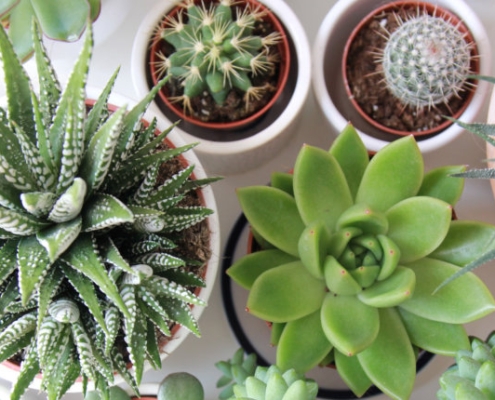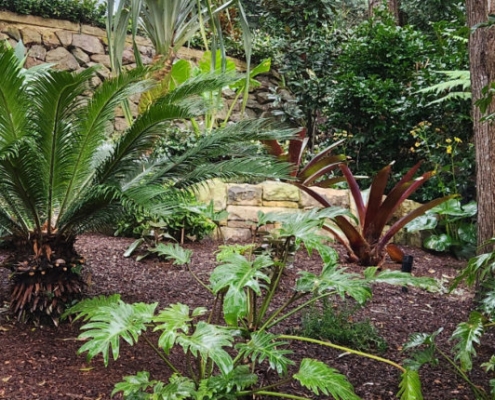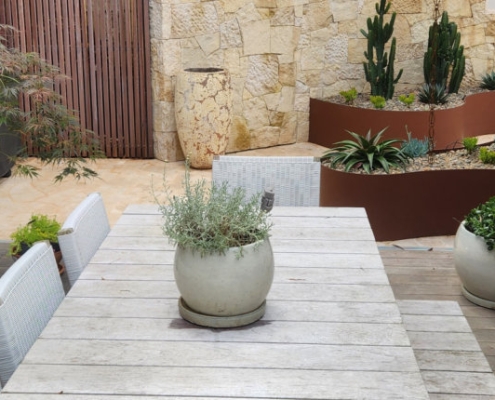Utilizing Vertical Space: Vertical Gardening and Structures
Vertical gardening is a horticultural practice that involves growing plants upward, utilizing vertical space to create lush, green environments. Unlike traditional gardening, where plants spread horizontally, vertical gardening involves structures that allow plants to climb, drape, or be suspended. It’s an innovative approach that maximizes space and promotes sustainable cultivation.
In a world where space is increasingly limited, the importance of utilizing vertical space cannot be overstated. Vertical gardening presents a practical solution, enabling individuals to grow plants in confined spaces, such as balconies, small yards, or even indoor settings. This method is particularly valuable in urban areas where available land is scarce, offering a means to reconnect with nature and foster green spaces in the midst of concrete landscapes.
Vertical gardening involves a range of structures designed to support plants in an upward direction. These structures can be as simple as trellises and hanging planters or as complex as living walls and modular systems. The key is to harness vertical surfaces effectively, providing a framework for plants to thrive. These structures not only serve a functional purpose but also contribute to the aesthetic appeal of both indoor and outdoor spaces, turning walls and unused areas into vibrant, living canvases.
Benefits of Vertical Gardening
A. Space Efficiency
Maximizing Limited Space
Vertical gardening is a space-efficient strategy that allows individuals to make the most of limited areas. By utilizing vertical structures such as wall-mounted planters and hanging gardens, gardeners can cultivate a variety of plants without requiring expansive horizontal plots. This is particularly advantageous for those with small yards, balconies, or confined outdoor spaces.
Urban Gardening Solutions
In urban environments where space is at a premium, vertical gardening emerges as a practical solution. It enables city dwellers to engage in gardening activities despite living in apartments or homes with minimal outdoor ground space. Vertical structures, like vertical towers and wall-mounted planters, provide an avenue for urban gardening, fostering green spaces amid the concrete landscape.
B. Increased Crop Yield
Optimal Sunlight Exposure
Vertical gardening allows plants to be strategically positioned to receive optimal sunlight exposure. By arranging plants vertically, each can receive the necessary sunlight for photosynthesis, promoting healthy growth. This targeted sunlight exposure is particularly beneficial in areas where sunlight may be limited due to surrounding buildings or structures.
Improved Air Circulation
Unlike traditional gardens where plants may be densely packed, vertical gardening promotes improved air circulation around each plant. This helps prevent the development of diseases and encourages better nutrient absorption. The enhanced air circulation also contributes to the overall health and productivity of the vertical garden, resulting in increased crop yields.
C. Aesthetic Appeal
Creating Vertical Gardens as Art
Vertical gardening transcends functionality and serves as a form of artistic expression. By carefully selecting plants, arranging them thoughtfully, and incorporating diverse colours and textures, individuals can transform vertical spaces into living works of art. This creative aspect of vertical gardening adds a visually pleasing dimension to the environment.
Enhancing Outdoor and Indoor Spaces
Vertical gardens enhance both outdoor and indoor spaces, turning ordinary walls into vibrant showcases of nature. Whether on a balcony, patio or within interior spaces, vertical gardens contribute to a visually appealing and soothing atmosphere. This aesthetic enhancement can positively impact the overall ambience of homes, offices, or public spaces.
Types of Vertical Structures
A. Vertical Wall Gardens
Living Walls
Vertical wall gardens, commonly known as living walls, are structures that integrate a variety of plants into vertical surfaces. These living artworks are designed to thrive in a vertical orientation, creating a lush and vibrant tapestry of greenery. Living walls can be installed both indoors and outdoors, providing an innovative way to bring nature into architectural spaces.
Modular Wall Systems
Modular wall systems offer a flexible and scalable approach to vertical gardening. These systems consist of individual modules that can be easily assembled and customized according to space requirements. Modular wall systems provide an efficient way to create vertical gardens, allowing for easy rearrangement of plant arrangements and facilitating maintenance.
B. Vertical Towers and Columns
Tiered Planters
Vertical towers with tiered planters are structures that enable the cultivation of plants in a stacked, multi-level fashion. These tiered planters are arranged in ascending order, providing an organized and visually appealing display of plants. This vertical gardening method maximizes space efficiency, allowing for the growth of various plants in a confined area.
Stackable Containers
Stackable containers represent a practical solution for vertical gardening, especially in limited spaces. These containers can be stacked on top of each other, creating a vertical column of individual growing units. Stackable containers are versatile and suitable for a variety of plants, making them a popular choice for those seeking a compact yet productive vertical gardening option.
C. Hanging Gardens
Suspended Planters
Hanging gardens involve the use of suspended planters that are suspended from overhead structures or supports. These planters allow for a creative and space-efficient way to cultivate plants vertically. Suspended planters are well-suited for trailing plants and vines, adding a dynamic and decorative element to both indoor and outdoor spaces.
Overhead Trellises
Overhead trellises are structures that provide support for climbing plants. These vertical gardening elements create an overhead canopy of greenery, adding shade and visual interest to outdoor spaces. Overhead trellises are particularly effective for growing plants that require vertical support, such as tomatoes, cucumbers, or flowering vines.
Plant Selection and Care in Vertical Gardens
A. Choosing Suitable Plants
Consideration of Growth Habits
When selecting plants for vertical gardens, it’s crucial to consider their growth habits. Some plants are natural climbers, while others may be better suited for hanging or trailing. Choose plants that thrive in a vertical environment, adapting to the upward growth pattern. Understanding the growth habits of your chosen plants ensures a harmonious and visually appealing vertical garden.
Compatibility with Vertical Structures
Ensure that the selected plants are compatible with the specific vertical structures in your garden. Different plants have varying support needs, and some may require trellises, while others thrive in modular wall systems. Matching the characteristics of your chosen plants with the features of your vertical structures is essential for their successful integration.
Plants You May Consider
- Climbing Roses – Climbing roses are classic choices for vertical gardens due to their natural climbing habit. They can be trained to grow vertically along trellises or other support structures. These plants add a touch of elegance with their beautiful, fragrant flowers, making them a popular choice for vertical spaces.
- Philodendrons – Philodendrons are excellent for vertical gardens, especially in indoor settings. Their trailing or climbing varieties work well with hanging planters and vertical structures. These plants are known for their low maintenance and ability to adapt to varying light conditions, making them ideal for vertical gardening in different environments.
- Cucumbers – Vertical gardening is a practical solution for growing cucumbers, especially compact or bush cucumber varieties. By utilizing vertical towers or trellises, cucumbers can climb and grow vertically, saving space while allowing for optimal sunlight exposure. This method also helps prevent soil-borne diseases commonly associated with ground cultivation.
- Ferns – Many fern species, such as Boston Ferns (Nephrolepis exaltata), thrive in hanging baskets and vertical gardens. Their cascading fronds create a lush and textured display. Ferns are adaptable to shaded areas, making them suitable for vertical structures where direct sunlight may be limited.
- Spider Plant – Spider plants are resilient and adaptable, making them suitable for vertical gardens. Their arching, cascading foliage works well in hanging planters. Spider plants are known for their air-purifying qualities and ability to tolerate a variety of light conditions, making them versatile for both indoor and outdoor vertical gardens.
- Vertical Succulent Varieties – Many succulent varieties have a natural tendency to trail or hang, making them excellent choices for vertical gardens. Their water-storing capabilities make them well-suited for lightweight soil mixtures typically used in vertical gardening. Vertical succulent gardens provide a modern and visually appealing aesthetic.
- Nasturtium – Nasturtiums are vining plants with vibrant, edible flowers. They are well-suited for vertical gardens, especially when grown in hanging baskets or allowed to cascade down vertical structures. Nasturtiums are easy to grow, attract pollinators, and add a pop of color to vertical spaces.
B. Soil and Water Management
Lightweight Soil Mixtures
In vertical gardens, the choice of soil is crucial for both plant health and structural stability. Opt for lightweight soil mixtures that provide adequate aeration and drainage. These soils prevent excessive weight on vertical structures while supplying essential nutrients to the plants. Consider using specialized potting mixes designed for vertical gardening to optimize plant growth.
Irrigation Systems for Vertical Gardens
Efficient irrigation is fundamental for the well-being of plants in vertical gardens. Implementing drip irrigation systems or self-watering containers ensures a consistent and controlled water supply. These systems prevent water runoff, optimize water usage, and maintain an ideal moisture level for the plants. Proper irrigation is especially critical in vertical gardens where water distribution can be challenging.
C. Maintenance Tips
Pruning and Trimming
Regular pruning and trimming are essential tasks in maintaining the health and appearance of plants in vertical gardens. Trim excessive growth to encourage bushier, more compact plants. Pruning also prevents overcrowding, enhancing air circulation and reducing the risk of diseases. Regular maintenance helps shape the vertical garden and promotes the overall well-being of the plants.
Pest Control in Vertical Spaces
Vertical gardens, like any other garden, are susceptible to pests. Implement integrated pest management strategies to control pests effectively. Inspect plants regularly for signs of infestation, and consider natural remedies or environmentally friendly pesticides. Proper pest control measures contribute to the longevity and vitality of plants in vertical spaces, ensuring a thriving vertical garden.
When choosing plants for vertical gardens, it’s essential to consider the specific conditions of your space, including light levels, climate, and the type of vertical structure available. Additionally, selecting a mix of plants with varying textures and growth habits contributes to a visually interesting and harmonious vertical garden.

